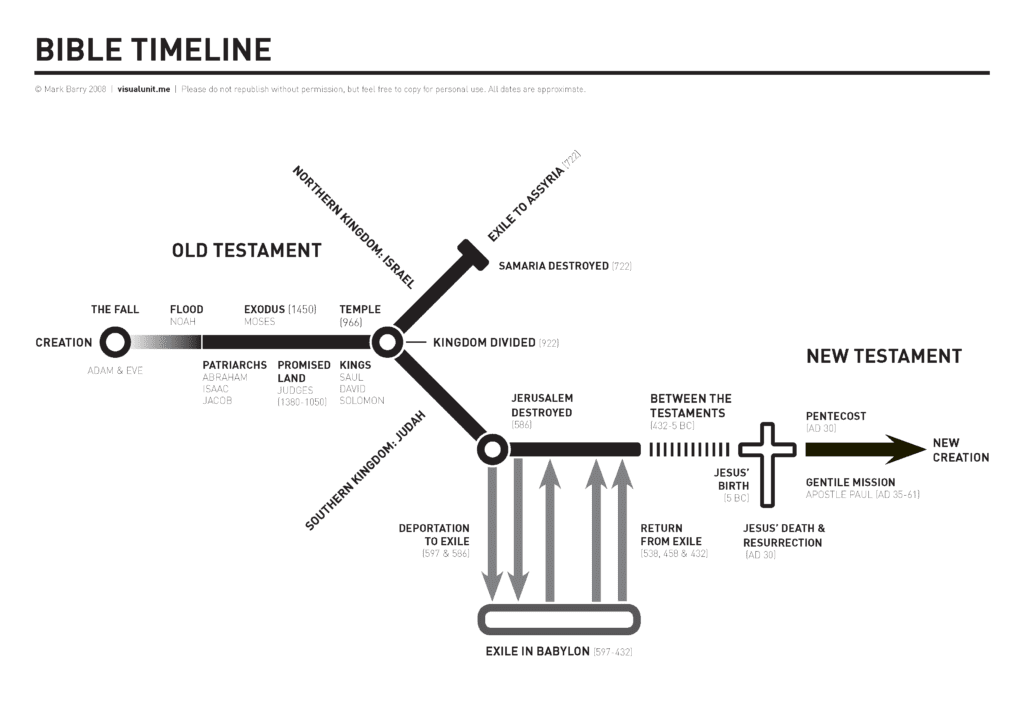
If you’ve done the What is Christianity? course, you’ll have seen the reason why we study the Bible. In a nutshell, the Bible is God’s word – it is the message that he wants us to know. That’s why I created this website, Understand the Bible, not simply to help people understand any old book but God’s message for human beings.
All Scripture is God-breathed and is useful for teaching, rebuking, correcting and training in righteousness, so that the servant of God may be thoroughly equipped for every good work.
2 Timothy 3:16-17
It stands to reason, then, that if you want to know God better you need to read the Bible. But – how do you read the Bible? It’s a big book and it can be quite hard to know where to start. Many people have said to me they started out reading the Bible very enthusiastically. They started reading Genesis (the first book in the Bible), and then got to Leviticus and gave up! This is very common.
I would actually suggest Genesis is not the best place to start if you’re completely new to the Christian faith and to reading the Bible. So, where do you start? And how do you actually go about reading the Bible?
How do I choose a Bible?
I’d definitely suggest getting a good old-fashioned paper Bible. Digital Bibles are handy, but personally I think there are advantages to a paper Bible which you can’t get from a digital copy.
When you’re looking for a Bible, the first question you will probably come across is, which version? If you go into a bookshop or look online for a Bible, it seems like there are many different versions to choose from!
The key thing is the translation of the Bible that you use. The Bible was not written in English, so it needs to be translated. Different translations are aimed at different people – some are more technical and meant for in-depth study, whereas some are meant for ease of reading. There’s no right or wrong!
If you look at a website such as Bible Gateway, you can try out several Bible translations. On this website I tend to use the New International Version, which is a good balance between readable and true to the original language. But you could also try to the New Living Translation which is also very readable.
The important thing is to find one that you feel comfortable with and that you can understand. I know people who’ve had old Bibles they were given as children which use antiquated language, and they’ve found it a real hindrance to understanding the Bible! Go for something modern, something which you can understand.
See some recommendations down at the bottom under the ‘Resources’ section.
Where do I start reading the Bible?
I would say the best place to start reading the Bible is with the four gospels (at the beginning of the New Testament) – Matthew, Mark, Luke and John. If you stick with them to start with, you will come to know Jesus, who is himself the heart of the Christian faith. I would suggest reading the gospels first, and then moving on to other parts of the Bible.
The important thing to remember is that not all parts of the Bible are equally easy to understand. Some parts of the Old Testament are more difficult and need a bit more study. Some parts, such as the gospels, are more easy for beginners to understand. If you’re a beginner there is no shame in starting with the ‘easy’ bits – it’s common sense! As you start to read and understand more, you can delve into some of the more ‘difficult’ bits of the Bible.
If you don’t understand something, move on – just focus on the things that you do understand to start with. There are usually enough of those to be going on with!
How do I understand the Bible?
This is obviously a huge topic and what this website is all about! All I will do here is give a few brief pointers. One of the most helpful things you can do in understanding the Bible is to have a rough overview of what’s in the Bible.
The Bible is a big book – or, to be more precise – a collection of books. It was written by many authors over the course of about 2,000 years. (Of course, we know God was the ultimate author…) It’s divided up into two parts, the Old Testament and the New Testament. The Old Testament is the bigger section (about 3/4 of the Bible). It’s the part of the Bible which was written before Jesus. The New Testament is the part of the Bible which was written after Jesus.
There are different kinds of literature in the Bible. For example, the Psalms are poetry. 1 and 2 Kings are history. Matthew is biography, and Ephesians is a letter. It’s important to understand this: if you try to read a poem as history, you’ll soon get very confused!

The Bible is not written strictly in chronological order, but there is a timeline to the events of the Bible – this graphic describes the basic timeline of the Bible. When you’re reading a part of the Bible, in particular the Old Testament, it’s really helpful to have in mind where it sits on the timeline so you can understand the wider context.
The most important thing to remember is that, at the end of the day, the entire Bible is about Jesus. One way or another, every single part of the Bible points to Jesus and is about him. That’s something which I hope you will come to discover the more that you read it.
There’s a lot to learn – but DON’T BE DISCOURAGED! There is plenty of help available – e.g. a good study Bible can really help you put each book into context. see the resources section below.
How should I read the Bible?
So how do you actually go about sitting down to read the Bible? Do you just read it, like you would a novel? Is it like a reference book? Here are my suggestions for starting to read the Bible. You might want to adapt a little over time – that’s fine. The most important thing is that you’re reading the Bible!
Just like I said in the last section on prayer, I would suggest setting a consistent time for you to read the Bible every day, alongside praying. Start with a small passage – maybe a chapter, or a small section. Don’t feel like you have to read it all at once – personally, I prefer reading a smaller amount each day but thinking more about it.
I would also suggest working your way through a book of the Bible, e.g. start reading Matthew from chapter 1 and work your way through it.
So what do you actually do when you sit down to read the Bible? Here’s what I suggest:
- Pray – don’t underestimate how important this is! Ask God to help you understand the Bible.
- Read the passage
- Think about it – if you have a study guide this will come handy at this point. Otherwise you might like to ask yourself some questions about what you’ve just read:
- What does this passage teach me about God?
- What does this passage teach me about people?
- Is there a command to be obeyed or an example to be followed (or avoided)?
- Does this passage shed any light on other passages I’ve read?
- Pray again – ask God to help you put into practice what you’ve read. You might also want to use this time to pray for other things, see the prayer section.
Resources to help understand the Bible
Fortunately, there are hundreds of resources to help you understand the Bible. I’ve collected some of my favourites here, but there are many more.
Here on UTB, you might want to check out my regular Learn to read the Bible videos.
Bibles
A good Bible will go a long way to helping you. Many Bibles these days include an introduction to each Bible book, notes to help you understand difficult bits, and other articles on topics to help you. These Bibles are usually called ‘Study Bibles’, and I can thoroughly recommend them.
I would suggest either the NIV Study Bible or the ESV Study Bible. Both are excellent, both have notes on the text as well as an introduction to each book. There are maps, facts, illustrations, and articles to help understand the Bible and the world of the Bible. Personally speaking, I use the NIV translation of the Bible day-by-day, but you might want to have a look at them and compare.
They are a little expensive, but you will be using them regularly and they will last a long time. A good study Bible is a worthy investment!
Online / Apps
Daily Reflections – published by the Bible Society. A short reading and reflection each day on the Bible. Follows a Bible plan designed to take you through the Bible in a year.
Daily Readings – based on C.H. Spurgeon’s famous Morning and Evening devotions. I have used these devotions myself and they are wonderful.
Bible in One Year – published by the people who make the Alpha Course. This is an App which takes you through the Bible, a little bit each day, with some thoughts on each passage to help you understand it.
Bible Project – the Bible Project have LOTS of helpful videos to help you read and understand the Bible.
Books
Through the Bible Through the Year – by John Stott, an excellent Bible teacher. This book takes you through the Bible in a year, with a short reading every day as well as some explanation. Highly recommended!
The Lion Handbook to the Bible – something of a classic (it’s been in print since 1973 – although it has been updated since then!). This will help you to have the background information you need to know as you begin reading the Bible.
How to Read the Bible Book by Book – does what it says on the tin! Helps you to read and understand each book of the Bible.
Bible Reading Notes – there are hundreds of these available. Some you can subscribe to with a reading for each day. You can see a selection of them here. I’ve used one called “explore” before, each one has the notes in for a whole quarter.
Get reading the Bible!
Well I hope that this page has convinced you that it is possible to start reading the Bible! It might seem intimidating at first, but there is lots of help available. Happy reading! And keep on going – it’s worth it!
